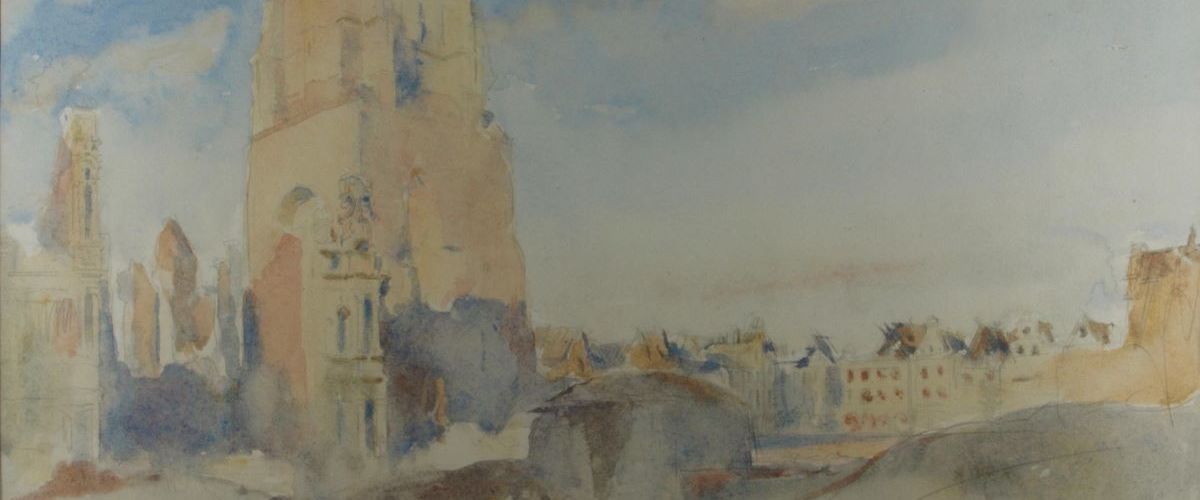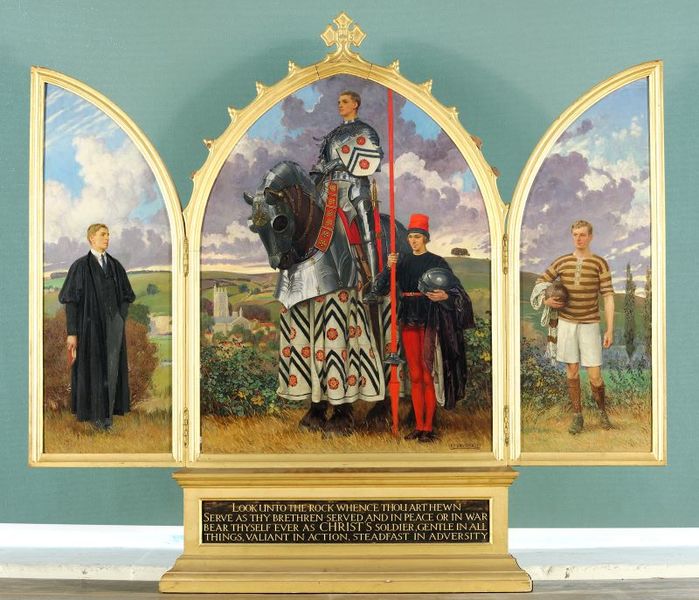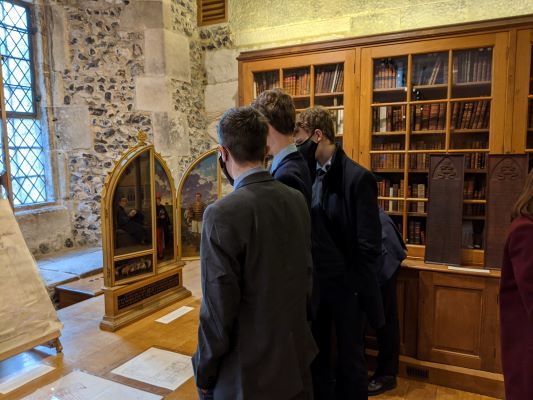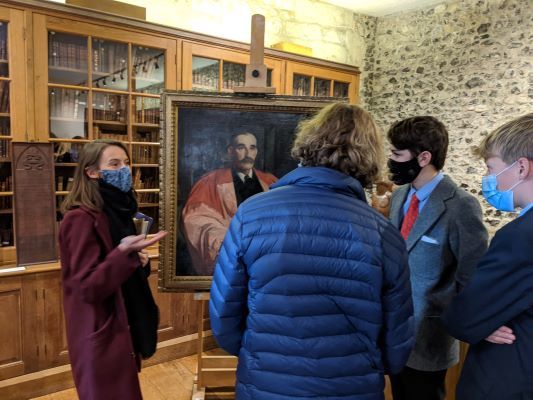

Winchester At War Exhibition
The exhibition, Winchester at War, on display in the Eccles Room until 20 November, remembers World War I through works in the school’s collection. The display was curated by two top year art historians, Felix Beddow and Nicholas Rhodes, under the guidance of the Head of Art History, Adam Rattray. The displayed artworks and artefacts capture responses to the War: at a national level in the works of renowned war artists—including Henry Tonks and his student, C. R. W. Nevinson—and at the school, in the art and architecture that commemorates the Wykehamists who lost their lives in service.
A New Form of Remembrance
The curators enlisted the help of other students to make the display an engaging, multisensory experience. Ben Salway created an audio track that combines music, speech, and atmospheric sounds, and Harry Chappell shot drone footage of the inscription that runs around the inner side of War Cloister.
Written by Montague Rendall, Headmaster during the War and a great advocate of art and art history at Winchester College, the inscription commemorates the Wykehamists who died in War.
These overlooked highlights include objects from around the school: Glyn Philpot’s portrait of Rendall in School, the Roll of Honour manuscript in Chapel, and drawings of Alfred Turner’s wheel-headed cross at the centre of War Cloister. Showing these in a new light, the exhibition offers an enriched understanding of the impact of WWI on the school’s community, and how its memory lives on in the very fabric of the College that we experience every day.
Experience in Curation
The exhibition has been eye opening for its curators as well as its visitors. On the experience, Felix reflects, "The process as a whole has encouraged my interest in curation, persuading me to further consider it as something I would want to be involved with beyond the school. Working within the physical limitations and possibilities offered in the Eccles Room, handling precious artefacts, and researching the stories behind the school's collection, have all given a taste of the challenges and opportunities museum curation holds."




 Head back to stories
Head back to stories